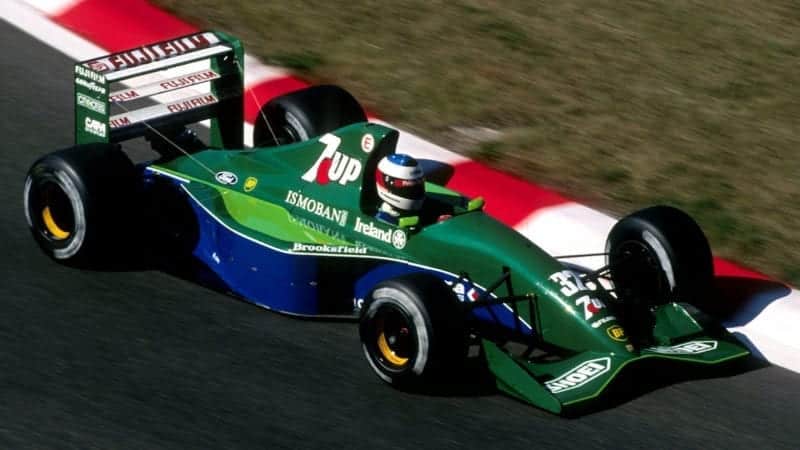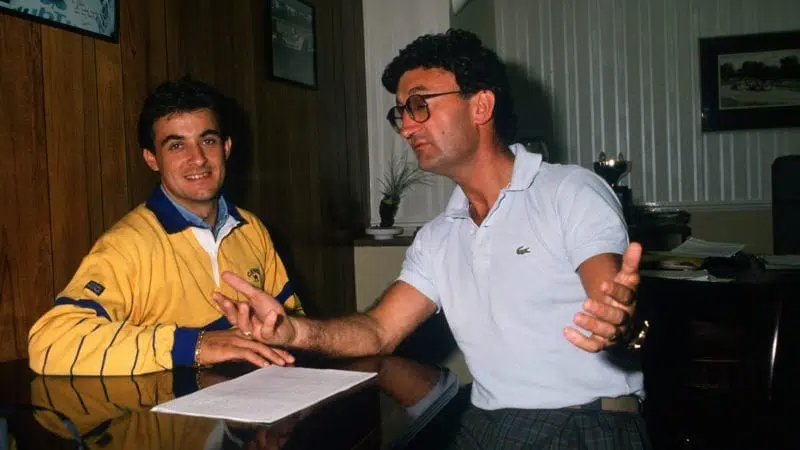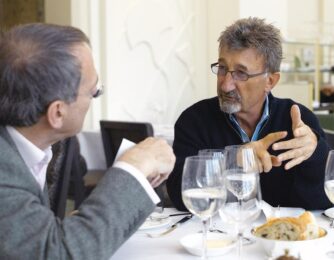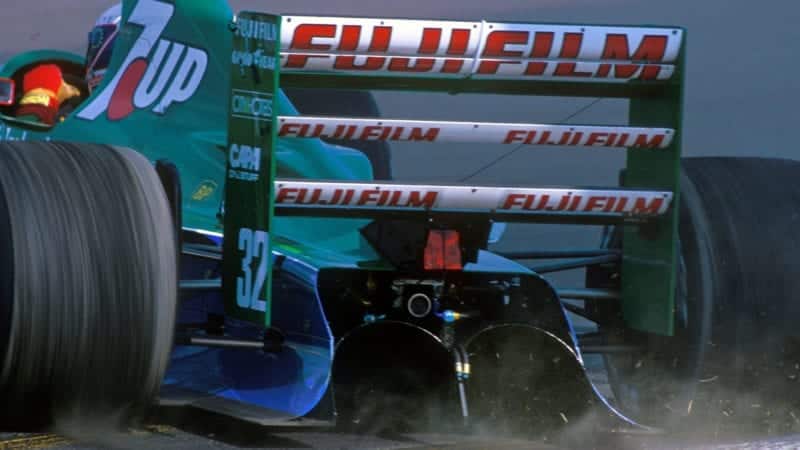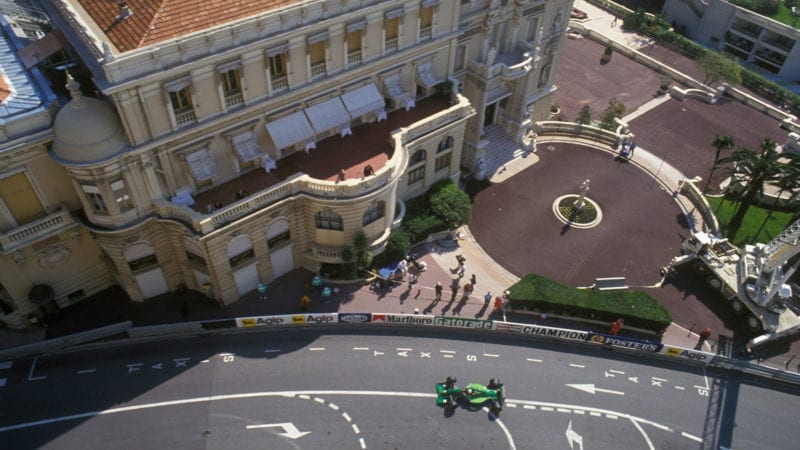“He was the most practical man I’ve ever met in my life,” remembers Jordan. “I cycle a lot with Adrian Newey in Cape Town, where we both have homes. We often talk about various things, and he’s in full agreement [about Anderson] in terms of practicality.
“If he had to make the gearbox, he’d put the spanner down and get on and do it. He never asked anyone to do something that he himself couldn’t do.”
Anderson was designing F3000 cars for Reynard and initially rebuffed an offer, but recalls how Jordan wasn’t one to take no for an answer, especially when he saw the impact Anderson could have in a fledgling F1 outfit with next to no budget.
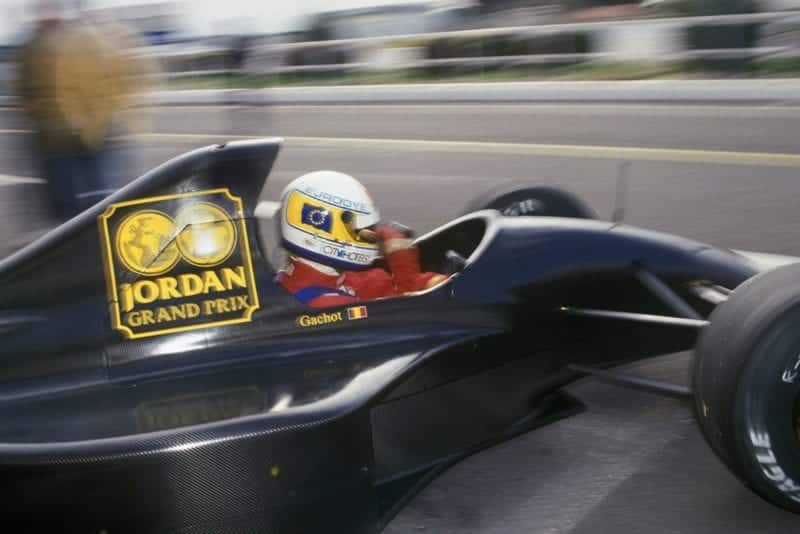
Gachot testing the unliveried 191
Grand Prix Photo
“I said, ‘You’re mad. I haven’t got the experience.’” Anderson previously told Motor Sport, “I kept saying no until finally, with EJ harassing me, I thought, ‘Well, I’ll probably get fed up with it after a couple of months, but why not?’”
By recruiting a couple of Anderson’s Reynard colleagues, Jordan had also managed to form the rest of the design team in one fell swoop.
“I had to go and see Rick [Gorne, Reynard Managing Director] and say ‘Gary is gonna come and join us. And the sad part is that he’s taking Andrew Green and Mark Smith with him!’”
With Anderson working on the chassis and aerodynamics, Green on the suspension and Smith taking up gearbox duties, the tight-knit group pulled together a coherent F1 package.
Come that fateful day in November 1990, it had all come to fruition. Funds were tight, but the car was there.
“We hadn’t enough money to pay for the paint,” says Jordan, “So it was all carbon, all black. And it looked awesome. We just put Jordan on the side, there was no sponsor,”
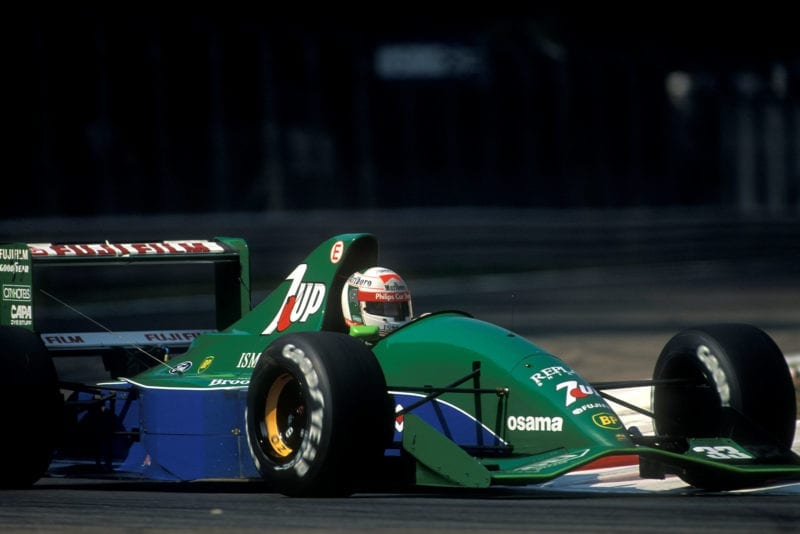
De Cesaris was brought in as the old hand behind the wheel
Grand Prix Photo
The ‘blank’ F1 car was rolled out at Silverstone as a 200mph ‘Your ad here’ sign.
A new team that had no spare parts and a very limited number of engines needed an experienced hand at the wheel. Jordan had just the man in mind.
“I didn’t really get to know EJ until when I was up testing at Silverstone during the late ’80s,” says John Watson, the first man to ever drive a Jordan grand prix car, “You would go into the Silverstone diner at lunchtime and he would be in there holding court. We got to talk and had a natural affinity.”
